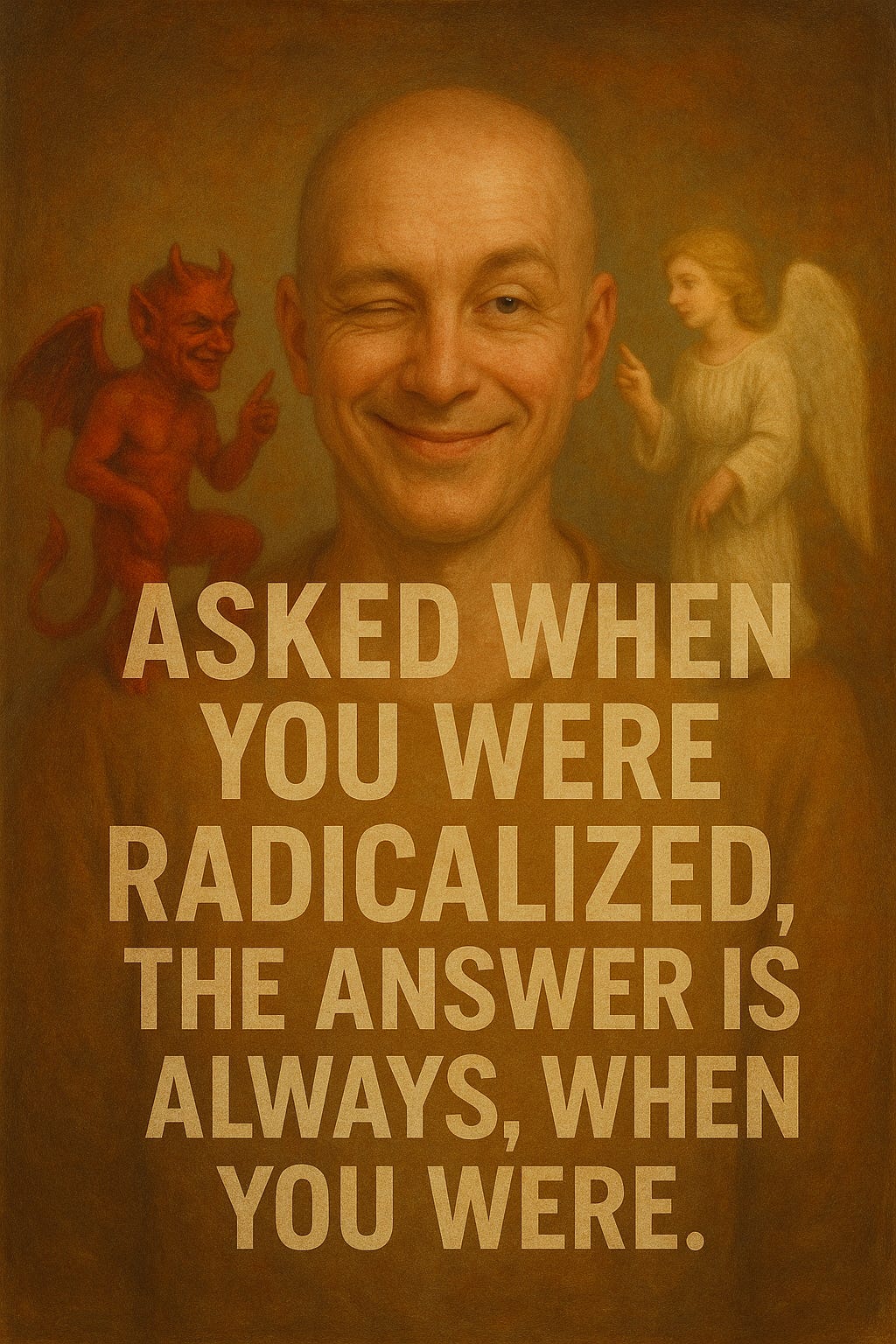Subliminal Stories: How We’re Shaped Before We Know It
Who Are You in This Picture? A Visual Question of Self
TL;DR
This project demonstrates how a digital artwork—featuring a human figure, an angel, a devil, and subliminal text—was created using layered compositing, photorealistic rendering (PBR), and isometric exploded views.
Key points:
Layers: Canvas texture → central figure → angel/devil symbols → explicit text → subliminal overlay (“Who are you in this?”).
Techniques: Parallel projection, alpha masking, and realistic light-surface modeling.
Purpose: Showcases how symbolic storytelling and subliminal messaging combine with digital art workflows to influence viewer interpretation.
Educational Use: Serves as a model for teaching digital imaging, semiotics, and cognitive visual design.
Here’s a journal-style scientific paper draft expanding on the earlier explanation, formatted for educational or publication use:
Fabrication and Semiotic Analysis of a Multi-Layered Digital Artwork: An Educational Case Study
Abstract
This study explores the fabrication and symbolic interpretation of a composite digital artwork featuring layered photorealistic rendering, subliminal textual elements, and symbolic figures (angel and devil). The process demonstrates the integration of computational graphics techniques with narrative design principles to convey complex moral and cognitive concepts. The work serves as an educational tool for visual communication, digital fabrication, and cognitive semiotics.
1. Introduction
Digital image fabrication has evolved significantly with the integration of photorealistic rendering and symbolic narrative design. By combining physical rendering algorithms with layered visual storytelling, artists and researchers can create highly communicative imagery that transcends static illustration. This paper documents the iterative development of an artwork, deconstructs its layers, and provides a semiotic analysis of its cognitive and cultural impact.
2. Materials and Methods
2.1 Layered Digital Fabrication
The artwork was constructed using a layer-based compositing pipeline, as shown in Figure 1 (isometric exploded view).
Base Canvas Layer: A neutral textured substrate mimicking classical painting mediums, digitally generated to provide aesthetic depth.
Subject Rendering: A photorealistic figure created using physically based rendering (PBR) to simulate realistic skin shading, lighting, and fabric interaction.
Symbolic Figures: Angelic and demonic characters were digitally sculpted and composited on opposing shoulders to represent internal moral tension, a classical motif in Western art.
Textual Overlays: Foreground text conveying explicit meaning and subliminal text embedded as a low-opacity overlay (“Who are you in this?”) to stimulate subconscious inquiry.
2.2 Computational Techniques
Physically Based Rendering (PBR): Accurately models how light interacts with surfaces (Cook-Torrance BRDF).
Isometric Exploded View Rendering: Utilizes parallel projection to spatially separate layered components without perspective distortion, thereby enhancing educational clarity.
Alpha Masking & Transparency Controls: Enables non-destructive overlay integration and subliminal content embedding.
3. Semiotic Analysis
3.1 Symbolic Encoding
The central figure represents a neutral moral agent, while the angel and devil embody classical dualistic ethical tension. This duality has persisted in art since medieval Christian iconography and functions as an accessible metaphor for moral decision-making.
3.2 Textual Anchoring
According to Barthes’ theory of anchorage, text helps resolve ambiguity in visual interpretation. Here, two textual layers perform different functions:
Foreground Message: Provides explicit interpretive framing.
Subliminal Prompt: Designed to engage implicit cognition, encouraging self-reflective interpretation without overtly directing conscious reasoning.
3.3 Cognitive Engagement
The subliminal prompt utilizes a low-contrast design and peripheral positioning, capitalizing on the preconscious visual pathways of the human brain. Research on subliminal priming suggests that such visual cues can modulate emotional resonance and thematic introspection.
4. Educational Implications
This artwork functions as an instructional model for:
Digital Art Fabrication: Demonstrating layer-based compositing and rendering workflows.
Visual Semiotics: Providing a case study in symbolic narrative integration.
Cognitive Design Principles: Showcasing how text and imagery interplay in influencing viewer interpretation.
5. Conclusion
The examined artwork illustrates the synergy between advanced computational imaging, symbolic storytelling, and cognitive psychology. By deconstructing its iterative fabrication and analyzing its semiotic elements, educators and researchers can gain a deeper understanding of how visual narratives are constructed and perceived.
6. References
Barthes, R. (1977). Image-Music-Text. Hill and Wang.
Cook, R. L., & Torrance, K. E. (1982). A Reflectance Model for Computer Graphics. ACM Transactions on Graphics, 1(1), 7–24.
Pelli, D. G., & Tillman, K. A. (2008). The uncrowded window of object recognition. Nature Neuroscience, 11(10), 1129–1135.
Ramachandran, V. S., & Hirstein, W. (1999). The Science of Art: A Neurological Theory of Aesthetic Experience. Journal of Consciousness Studies, 6(6–7), 15–51.




